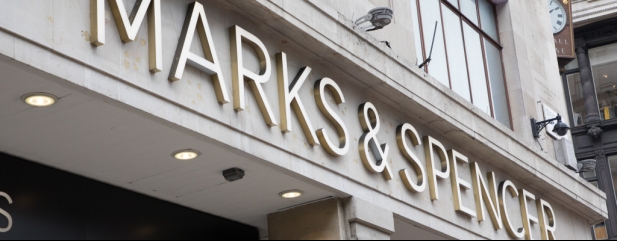Archived article
Please note that tax, investment, pension and ISA rules can change and the information and any views contained in this article may now be inaccurate.
Latest retail sales figures show slide in non-essential spending

The most recent retail sales figures from the Office for National Statistics make for illuminating if not uplifting reading. Sales in February were over 1% higher than January in volume terms suggesting consumers were feeling positive. Moreover, that gain took sales volumes back to where they were in February 2020 before the pandemic.
Total non-food sales – that is department stores, clothing, household and other non-food items – increased by 2.4% between January and February driven by a 5.5% rise in department stores and a 2.9% rise in clothing.
Unfortunately, when compared with February last year on a seasonally-adjusted basis – which we would argue is a more accurate reflection – sales by volume were actually down 3.3% despite the boost from department stores.
In value terms, spending was up 6.3% on a seasonally adjusted basis but this was entirely due to rising prices in most categories.
In food, volume sales were down 2.3% as consumers tightened their belts but in value terms sales were up more than 11% as prices rose by 18% last month, the highest level on record.
Sales of household goods in volume terms dropped 8.7% in February compared with annual declines of 8.4% and 11.8% in January and December as shoppers eschewed non-essential spending.
According to the GfK consumer confidence survey, while overall confidence may have improved slightly in February after several months of record low readings, the major purchase index – which reveals consumers’ willingness to spend on big-ticket items like sofas, washing machines or cars – is almost at rock bottom.
There is some light in the gloom, though, as spending on clothing and footwear rose last month in volume terms as well as value terms.
‘Despite the ongoing cost of living squeeze, customers were ready to spend on what they needed, with higher sales for categories including clothing and cosmetics,’ observed Helen Dickinson, chief executive of the British Retail Consortium.
The end of the Energy Bill Support Scheme in April means there remain challenges to consumer spending in the coming months, according to Dickinson, but it seems shoppers consider clothing and footwear to be ‘essentials’.
That could bode well for earnings from stalwarts such as Next (NXT), Marks & Spencer (MKS) and Shoe Zone (SHOE:AIM), who still have a strong high-street presence, while online retailers may fare less well as the post-pandemic surge in e-commerce seems to be rolling back as consumers return to shopping in person.
Important information:
These articles are provided by Shares magazine which is published by AJ Bell Media, a part of AJ Bell. Shares is not written by AJ Bell.
Shares is provided for your general information and use and is not a personal recommendation to invest. It is not intended to be relied upon by you in making or not making any investment decisions. The investments referred to in these articles will not be suitable for all investors. If in doubt please seek appropriate independent financial advice.
Investors acting on the information in these articles do so at their own risk and AJ Bell Media and its staff do not accept liability for losses suffered by investors as a result of their investment decisions.
Issue contents
Feature
Great Ideas
Investment Trusts
News
- UK small cap trusts: upgrade for Mercantile and changes afoot for Abrdn Smaller Companies
- Discover why Wetherspoons shares are up 50% since the start of 2023
- Deliveroo stuck in the mud despite efficiency push
- Why big tech has seen a handsome recovery which may have legs
- Latest retail sales figures show slide in non-essential spending

 magazine
magazine








